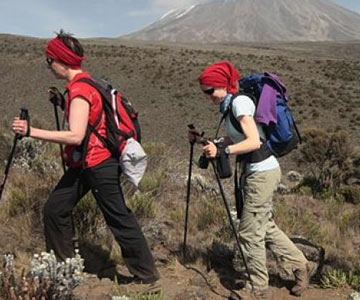The Umbwe Route isn’t for everyone, and that’s exactly what makes it appealing to serious adventurers. Known for its steep, fast, and direct approach, this trail offers little time for acclimatization and is typically recommended only for experienced trekkers or climbers already acclimated to high altitudes.
But for those willing to embrace the challenge, the reward is an intense, isolated, and adrenaline-filled climb that few others can say they’ve conquered. If the thought of rough terrain, thin air, and a more vertical-than-horizontal path excites you, keep reading.
The Umbwe Route begins on the southern side of Mount Kilimanjaro and quickly veers off into dense rainforest, steep ridgelines, and rocky paths. Unlike most routes that allow for a slow and steady climb, Umbwe hits you with rapid elevation gain from the get-go. There’s little flat ground, and the days are long and physically taxing.
Because of this intense ascent, it’s one of the least traveled routes but also one of the most beautiful. The trail is remote, scenic, and quiet, giving climbers a feeling of raw wilderness unmatched by more popular paths.
However, due to the steep incline and lack of acclimatization time, the summit success rate is lower compared to longer routes like Lemosho or Northern Circuit unless climbers are extremely fit and/or pre-acclimatized.

Since this is a short but intense trek, your gear needs to work hard. Here’s what’s essential:
Technical base layers (moisture-wicking)
Insulated jacket for cold nights and summit day
Rain shell (jacket and pants)
Warm hat, gloves, and neck gaiter
Waterproof trekking boots
Trekking pants (lightweight and warm layers)
4-season sleeping bag
Trekking poles for descents
Hydration system (3L minimum)
High-energy snacks
Headlamp + extra batteries
Personal medical kit (altitude sickness meds, pain relievers, etc.)
Acclimatization is the biggest challenge on the Umbwe Route. Because of the rapid ascent, your body may not have enough time to adjust. Here’s how to prepare:
Spend time at altitude before the trek, if possible (e.g., hike Mt. Meru first)
Climb pole pole (slowly slowly)—seriously, don’t rush
Stay hydrated (at least 3-4 liters daily)
Take Diamox or other altitude medication if recommended
Watch for symptoms: headaches, nausea, dizziness—report them to your guide
Whether you are ready for Tanzania Safari Dream or Kilimanjaro Adventure or Beach Relaxation for a few days or a few weeks long, our experts will create an itinerary from scratch, fully tailored to your wishes. Want to visit a beautiful destination or start an adventure to reach the top, or relax in a paradise, we will make it happen.
Kilisa Tours | Copyright © 2025 | All Right Reserved | Web by SechaPX